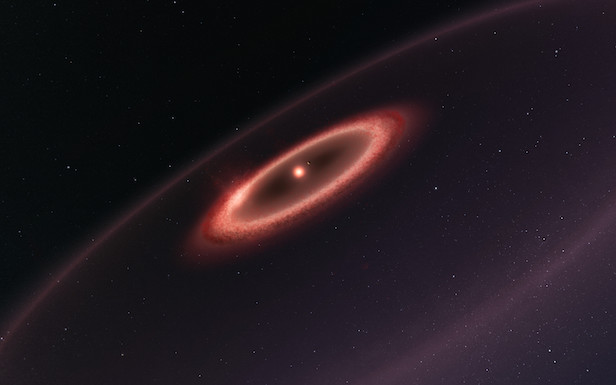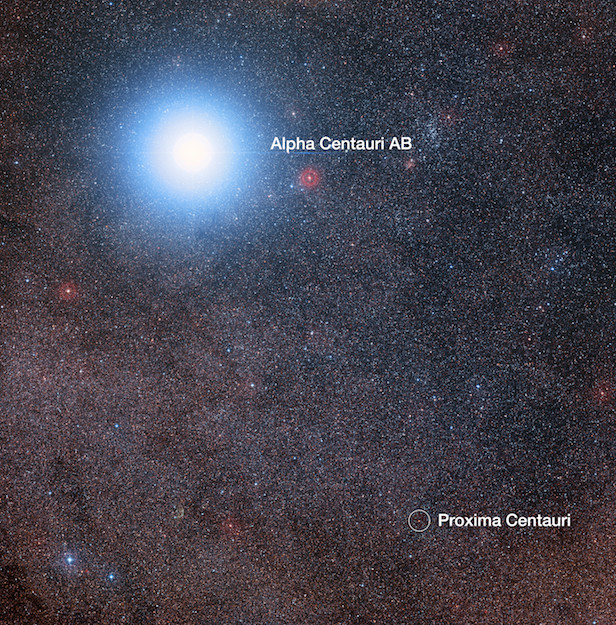Astronomers discover belt of dust surrounding nearest star
Cold dust has been found to surround our neighbouring star, Proxima Centauri – a feature that resembles our Solar System’s Kuiper Belt

The dust belts that surround Proxima Centauri are similar to the large belts in the solar system. Image credit: ESO/ M. Kornmesser
The Atacama Large Millimetre/submillimetre Array (ALMA) Observatory in Chile has exposed a belt of cold dust surrounding the closest star to our Solar System, Proxima Centauri. The new observations reveal a glow, emitted by the dust, that encompasses a region around the red dwarf equivalent to one to four times the distance of Earth from the Sun.
Proxima Centauri lies just four light years from Earth, making it the closest star to our planet. In 2016, it was discovered that there was an Earth-sized planet orbiting the red dwarf star, dubbed Proxima b. However, there is more to the star system then Proxima b, as ALMA has now shown cold cosmic duct surrounding the star. The dust ranges in sizes from less than a millimetre across up to several kilometres in diameter.
Guillem Anglada, of Instituto de Astrofísica de Andalucía (CSIC), Granada, Spain, explains the importance of this discovery. “The dust around Proxima is important because, following the discovery of the terrestrial planet Proxima b, it’s the first indication of the presence of an elaborate planetary system, and not just a single planet, around the star closest to our Sun.”

Proxima Centauri is separated from the Alpha Centauri binary star system by 1.94 trillion kilometres. Image credit: Digitized Sky Survey 2/D. De Martin/M. Zamani
The dust lies from Proxima Centauri at a distance of a few hundred kilometres and has a total mass of roughly one hundredth of the Earth’s mass. Estimations have also shown that the temperature is roughly -230 degrees Celsius (-382 degrees Fahrenheit), which is similar to the temperature of our Solar System’s Kuiper Belt.
There are signs of another belt of even colder dust about ten times further out. If proven, there will be many questions raised about its environment. “This result suggests that Proxima Centauri may have a multiple-planet system with a rich history of interactions that resulted in the formation of a dust belt,” says Anglada. “Further study may also provide information that might point to the locations of as yet unidentified additional planets.”
These results also have large ramifications for future space exploration projects to the Proxima Centauri system, such as the Starshot project, which aims to send microprobes attached to laser-driven sails for direct exploration. A dusty environment is important to take into account when planning the mission.
“These first results show that ALMA can detect dust structures orbiting around Proxima. Further observations will give us a more detailed picture of Proxima’s planetary system,” says Pedro Amado, also from the Instituto de Astrofísica de Andalucía. “In combination with the study of protoplanetary discs around young stars, many of the details of the processes that led to the formation of the Earth and the Solar System about 4600 million years ago will be unveiled. What we are seeing now is just the appetiser compared to what is coming!”
Keep up to date with the latest reviews in All About Space – available every month for just £4.99. Alternatively you can subscribe here for a fraction of the price!




